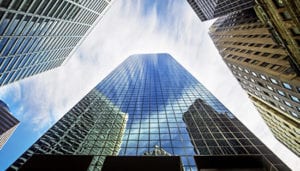Sustainability has been a buzzword, but the word has gained more traction recently as buildings consume around 40% of total global energy and emit 30% of greenhouse gas emissions. There is massive scope for developers, occupants and, operators to reduce these emissions, become more carbon negative, and create “healthy” buildings.
I recently moderated an engaging webinar titled “Upgrade Buildings to Enhance Occupant Safety and Well-being,” The conversation was informative. The big question is decoding how technology will help upgrade buildings that add to occupants’ health and safety. How do you guarantee resilience and uptime when employees can’t physically operate critical infrastructure?
This is what pushed the need for future-ready infrastructure. With the pandemic still going strong, commercial infrastructures’ health and marketability need to be designed for the safety and well-being of tenants. Digitization is the most plausible solution to create a people-centric infrastructure. A collaborative environment is also required to develop productively and sustainably to ensure operations are managed effectively. Hence, the need for IoT-based technology is a newfound discovery in recent times.
Initially, CRE was all about bringing costs down, creating appealing spaces and, creating energy-efficient infrastructure. However, developers, occupants, and operators have recently become more concerned about safety and health issues.
Establishing newer screening processes, new systems of HVAC, Schneider Electric’s IoT-based EcoStruxure that looks at not only well-being but also the resilience of a given infrastructure are some ways to start the process.
Only if buildings are healthy can you keep occupants and employees healthy.
Improving air quality is the most significant need of the hour in buildings. Using air filters like Merv 13 & 14, air quality monitors in the lobby, demand ventilation control, and other new technology will help the tenants develop a sense of safety. Existing buildings are also being retrofitted to new standards with the help of all the latest technology available.
We haven’t mastered AI yet, but statistics show its importance in driving healthier buildings encompassing safety, data-driven comfort, and sustainability.
- Faceless recognition, touchless surfaces, and sensors for both occupants and visitors
- Sensor-based equipment and other technologies that cut energy use while maintaining occupant comfort levels.
- ESG (Environmental, Social, and Governance) will be a new focus. AI and other data-driven technologies will bring more seriousness and transparency in performance compliance data and reports at the portfolio level as well as at asset levels
Technology will be vital in delivering these commitments made by the industry, which will enable buildings to be more energy sustainable at the same time resilient and future-ready.
About the author

Sweta Sharma
General Manager – Building Segment Lead
In her over 17 years of experience, Sweta has held sales, business development, and strategy positions. Sweta is an industrial engineer with a post-grad in marketing. She has worked for global companies such as Bosch India & Timken. In her current role at Schneider Electric, Sweta oversees the building segments and strategic accounts for Greater India. She implements innovative energy management & automation technologies to create a hyper-efficient, resilient, and above all, energy-sustainable environment.



